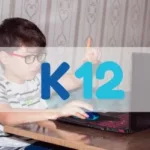
The rapid development in technology that favors digital progress in the learning system has made online learning for kids a success.
Many parents across the country have started embracing the E-learning system. Research shows that online study is likely to take over physical learning soon.
However, the process of adjustment and transition is proving to be quite challenging. The problem is affecting both the teachers, children, and parents.
But the outbreak of the pandemic has made both parties understand the significance of online learning. It is one of the situations that has also spearheaded the adoption of online learning for children.
Virtual learning has seen many pupils thriving in their academics and co-curricular activities despite the current situations. Change is indeed inevitable regardless of the circumstances.
Keep in mind that virtual classrooms tend to come with their advantages and disadvantages. Parents are advised to consider these factors before transitioning their children to online learning.
Is Online Learning Right for Your Kids?
There are mixed results between online education and face-to-face learning systems. But research shows that average students enrolled in online learning tend to perform better than those enrolled in a physical classroom.
However, this does not imply that E-learning is limited to average students. You can choose to take your kid regardless of their intelligence quotient.
The only big issue noticed from kids that took online learning is the inability to read and handle mathematics. It is the reason behind the development of a blended learning structure.
Most online schools are run to make a profit. But chartered public schools are funded by the taxpayers, which is the reason behind the ultimate focus on quality education.
If you plan to enroll your kid in online learning, it is advisable to access the pros and cons before deciding. All in all, online education is worth it for those students that are disciplined and dedicated.
Pros and Cons of Online Elementary School
Online schooling is a great option for many students during this COVID-19. The learning system prioritizes the health of learners and teachers.
However, many elementary schools across the country are considering making the learning system permanent even after the end of the pandemic.
If you plan to enroll your kid in a virtual learning system, then there are many things to keep in mind before making the decision.
Pros of Online Elementary School
These advantages include:
Increase Flexibility
Flexibility is one of the main advantages of online education. Virtual classes can take place from anywhere regardless of the geographical location and political climate.
The kids can choose the best learning environment that suits their needs at home. They may opt to learn while lying on the bed or taking breakfast.
The freedom of learning has made many parents embrace the learning system. Hence, there is no hassle of preparing kids very early in the morning for school.
Quite Affordable
The physical learning system in the United States of American is quite expensive. The parent has to incur costs for tuition fees, books, transportation, and other miscellaneous costs.
But E-learning has reduced the costs of schooling. The kids can access learning materials online, and no transportation costs are involved.
The parents are only required to pay for the internet and a small number of tuition fees. Besides that, an online study has fewer expenses.
Learning at Own Pace
Access to the learning materials is readily available. The kid may have an opportunity to learn at her own pace. The option makes the teacher not delay the syllabus, and the kid is likely not to lose anything.
If the child misses a lesson due to illness, then there is no need to worry. She will access the learning portable and get to know what other kids learn while away.
Provide Quality Education
Most elementary schools offering online study have developed strategies and design a system that enhances quality education. However, the quality of learning tends to depend on the institution.
The good news is that most online learnings have a small class size. The system also encourages a peer-to-peer learning model. The design facilitates a detailed and unique education way.
Besides that, the teaching plan for teachers is student-centered. It is customized to suit the level of understanding of each child.
Credit Transferability
The government accredits online studies from reputable institutions. If your child has been attending virtual classes and wishes to stop, there is no need to freak.
The parent can easily transfer the credits to the physical classroom of the same or another school. The idea helps to save on time, money, and kid’s education spent through online learning.
High-Quality Discussion
E-learning creates a discussion forum where students have to read and reflect on the comment before responding. The discussion structure allows the learners to articulate responses in a detailed manner than in the physical classroom.
Besides that, every child is given an equal opportunity to respond to the discussion. There is adequate time than in traditional learning situations.
Create a Level Playing Field
As is well known, students all over the world are bullied in traditional classrooms, however, in the US alone stats have shown that around 20% of all students age 12-18 have reported some kind of bullying. This is quite absent in the online learning system.
Discrimination due to race, age, and gender is not likely to happen in online education. The main agenda in the learning system is more content and thoughtful discussions.
Creative Teaching
Kids are prone to getting bored when learning is teacher-centered. It is a problem that is quite common with physical classes, and this has resulted in learners missing to grasp some concepts.
The good news is that online teaching supports an interactive learning environment. The educator can take the opportunity to ensure all students have grasped the main concepts in a topic.
Cons of Online Elementary School
These weaknesses include:
Involve Parents or Guardians
Elementary learners require the involvement of parents or guardians. They will be expected to coach and guide the students with their assignments or homework.
Therefore, online schooling will make the students not be more responsible after completing their elementary studies. They will always need the involvement and support of their parents.
Affect the Sightedness of Kid
Spending long hours on a computer is likely to affect the functionality of the eyes. The bright light from the keyboard and computer screen will damage vital components of the eyes.
The problem makes parents or guardians incur extra costs of buying eyes protective gears. Failure to consider these gears, then you are likely to incur medical expenses that are quite expensive.
Hinders Socialization
Online learning in elementary schools creates an environment with fewer distractions. However, the lack of social interaction will result in social mischief after the completion of the studies.
On the other hand, the style makes the child take more responsibilities since she is used to parental involvement and support.
Computer Literacy
Both learners and educators need to have a certain degree of computer skills. It is the only way to make online classes successful.
However, most elementary school pupils are not well versed with the computer. Therefore, this will waste a lot of time since these learners need to be taught how to use laptops.
Time Management
Online learning requires self-discipline and dedication. This is one of the problems that is going to drag many elementary students.
Most of them usually have a problem with waking up and managing time. This will also affect the completion of the syllabus.
Technology Requirements
Virtual learning cannot take place without the internet and computer. Most families across the country cannot afford these items. And this will inhibit online learning for kids.
Besides that, many institutions do not build their technical support. In case of any interruptions, the chances of missing classes the whole day are quite high.
Incompetent Curriculum
Most online programs have curriculums that are incompetent, making entire learning unsuccessful in the end. There are limited professionals for developing online learning curriculums across the country.
It is why the curriculum and teaching methodologies for traditional learning remain a real gem. The educators have to enforce some vital things during the teaching sessions.
Low Level of Synergy
Most online programs have great potential for high synergy due to active discussion forums from each learner. But this is only applicable if the virtual classroom has less than twenty pupils.
A class with more learners tends to lower synergy since there are limited dialog and interaction with their teachers. The discussion forum will not be used to great potential.
Conclusion
You should note that every kid has different needs and desires. Online learning for kids can be a great option for some but not for others.
Take time to figure out the option that suits your child by assessing online education’s strengths and weaknesses. Consider an option that teaches your kid useful life skills.
However, online learning at the moment is the best option due to the outbreak of the pandemic. It will help reduce the risk of infection and the spread of the virus.




